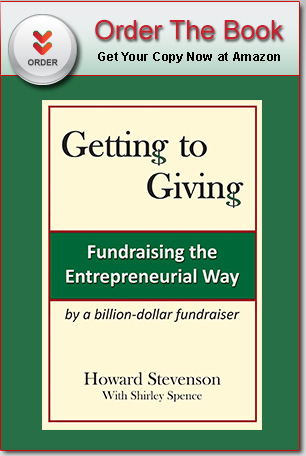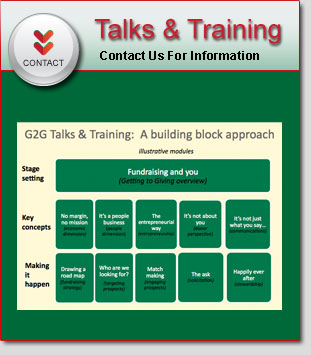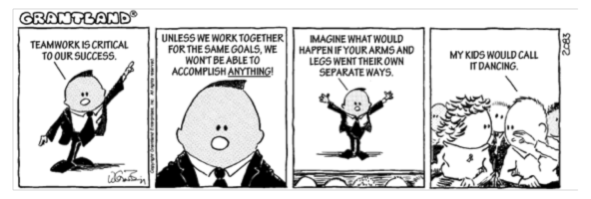One of my least favorite images of fundraisers is that of the Lone Ranger, swooping in on his horse to heroically seize the day. But, hey, what about Tonto? Fundraising is not just the person who makes the ask, whoever that may be. It requires a team of people with special talents, united by a common purpose, and recognized and appreciated for their contributions. It might be nice if it was easier, but it’s not. And, in fact, being part of a collaborative team is one of my favorite things about fundraising.
Unfortunately, too many fundraising organizations are competitive, political cauldrons. One development officer had an outstanding reputation for developing strategies for his prospects. Unfortunately, he never seemed to get around to executing them. “Ready, aim…ready, aim…ready, aim…” was how one person described it. Eventually, I asked him: “Can I reassign this donor? You haven’t called on him.” The reaction: screams of “That’s my prospect, he’s on my list!” That sort of competitive attitude can be reinforced by performance metrics, evaluation and compensation systems, and culture. But, it can be corrected similarly.
Organizational structure also can contribute to competition. I am often amazed at how siloed fundraising organizations tend to be. Within individual giving, there may be major gifts, annual giving, planned giving, a capital campaign, and more. Each group may be fighting for “donor rights.” Donors, however, may not care how their gift is categorized. What may annoy them, however, is making a donation, and then being “nickel and dimed” for special events or contributions to other groups. Fortunately, there are ways to address structural issues too, with cross functional teams or donor-centered liaisons, for example.
The “fundraising organization,” however, is not just the folks in the development office. I view it as a partnership among staff, volunteers, and donors. One development officer went even further, sponsoring regular meetings where employees were kept abreast of fundraising needs and activities. Her goal was to create create an environment where everyone, not just the formal fundraisers, felt responsible for success. One example of just that: 100% of Mount Auburn Hospital doctors and 60% of nurses showed their commitment to the organization’s mission by making personal donations to a major campaign.
The notion of competition extends beyond the organization as well. Yes, there are many nonprofits out there vying for dollars. But, I routinely say something that donors are genuinely surprised and pleased to hear: “Thank you for all the other good work you’re doing in the world.” (A few specifics can go a long way, here.) And I mean it. In fact, some of those efforts may well serve your cause. For SummerSearch, a leadership program for low-income youth, a contribution to the Posse Foundation – which offers four-year, full-tuition scholarships to public high school students – may well benefit its kids. Why wouldn’t it celebrate the good works of the Posse Foundation and its donors?
A competitive mindset can lead to misguided strategies, too. One common one is to try to “own” all your resources. Successful nonprofits get good at using other people’s resources—not just in the tenuous early days of the venture, but also as they gain traction. They learn which resources they should own and employ, and which can be bartered, partnered, or rented. They pursue strategic alliances with other organizations. They recruit volunteers. They share mailing lists. They partner on projects.
Think about the organizations in which you are involved. Is competition the watchword… or collaboration and teamwork?




